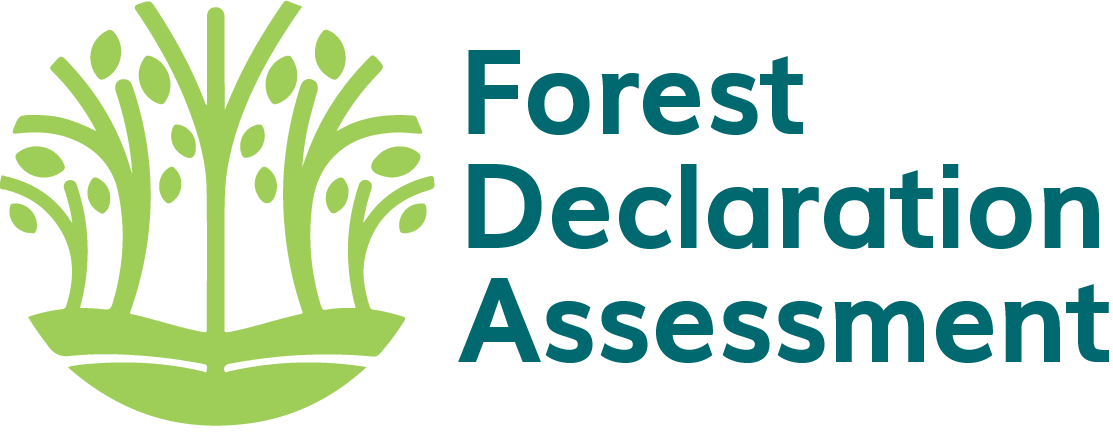By Jamison Ervin
2020 was supposed to be a ‘Super Year for Nature.’ The year began with two sobering reports by the World Economic Forum showing that more than half of global GDP is dependent on nature and recognizing that biodiversity loss is a top global risk along with climate change. Forest and biodiversity loss and climate change combine to create cascading societal risks of human-made environmental disasters, water crises, involuntary migration and interstate conflict. 2020 was supposed to mark a milestone for the New York Declaration on Forests and other global forest goals to halt commodity-driven deforestation, restore 150 million hectares of degraded forests and respect indigenous rights. None of these goals have been met. 2020 was also supposed to be the year for three forest-significant global meetings that were to catalyze global will for action on nature (The World Conservation Congress UNFCCC COP26, and CBD COP15). But Covid-19 had other plans and all three forest-significant global meetings are postponed until 2021.
The impacts of Covid-19 have caused devastating loss of human life, both from the disease and as a result of weakened enforcement of human rights and environmental regulations. Deforestation in the Brazilian Amazon has increased at an alarming and record pace, on top of already record-breaking deforestation, and governments are now using the spread of COVID-19 to open additional pathways into forests for logging and mining, putting indigenous peoples and local communities’ lives and livelihoods at risk. Forests matter now more than ever and 2020 can still be a Super Year for Nature and a milestone year for forests. The New York Declaration of Forests plays a crucial role in driving action and building the momentum for forest protection and it provides a framework for a forest-positive future that can accelerate a green recovery. There are three areas of action all stakeholders can take now to position forests at the heart of recovery and sustainable development.
First, use green stimulus packages to build back better by tackling forest issues and addressing the current unsustainable patterns of consumption and production.
- Governments can structure fiscal stimulus and financial aid packages to accelerate the transition to a fair and green economy. This can be accomplished through emphasizing forest-positive and climate-aligned recovery plans. Using green economy assessment tools to maximize alignment of proposed COVID-19 monetary and fiscal policies with a green forest-based recovery can provide multiple benefits. For example, investing in nature-aligned and climate-aligned stimulus packages can convey a return-on-investment rates of between 2:1 and more than 10:1.
- Governments can stimulate private sector investment with green investment road maps. If provided a clear investment road map, private sector investors will be likely to respond. Scotland recently unveiled a billion-pound investment road map that will focus on nature-positive businesses, restoration and protection, while stimulating the economy and creating green employment.
- Financial Institutions can shift forest-related finance from gray to green. Although nature provides up to 38% of our global climate mitigation needs, nature-based climate solutions only receive 3% of global climate finance. Furthermore, we invest more in the destruction of forests than in forest protection and restoration by a factor of 140:1. We must redress this imbalance by (a) improving financial accounting and transparency for private sector finance, through mechanisms such as CDP disclosure; (b) redirecting existing harmful subsidies and expenditures of public finance – we currently invest $5.2 trillion in fossil fuel subsidies and $700 billion in agricultural subsidies – now is the time to redirect those subsidies to forest-positive, carbon-neutral, inclusive investments; and (c) by redefining metrics for measuring human and planetary wellbeing – if we are to put nature at the heart of sustainable development, we must redefine prosperity, including greening the Human Development Index.
- Governments and development banks can restructure international debt into debt-for-nature swaps. Covid-19 has created a dual fiscal emergency for many countries – unprecedented sovereign debt, and lower foreign currency earning opportunities to service this debt. Lower- and middle-income countries, many with relatively high biodiversity, are especially hard hit. Debt-for-nature swaps, such as that recently implemented in the Seychelles, could catalyse forest protected areas and restoration efforts.
Second, ensure recovery efforts align with the Paris Agreement, the post-2020 Global Biodiversity Framework, and the Sustainable Development Goals, recognizing the role of forests in tackling the climate crisis, biodiversity loss, economic growth, and human prosperity.
- Governments and private sector can create safeguards for indigenous peoples and local communities. According to Global Witness, there has been a sharp increase in the rise of violence and intimidation of environmental defenders over the last five years, and loss of national governance to global corporations was included in the 2019 World Economic Forum Global Risks Report as a primary concern. At the same time, billions of people who depend on nature for their livelihoods are seeing an erosion of the health of their lands and waters, and they are increasingly vulnerable to biodiversity loss and climate change. Recovery efforts must bolster the rights of indigenous peoples and local communities.
- Governments can enhance NDCs through nature-based solutions, ensuring forests remain at the core of NBS, including for both climate mitigation and adaptation. Nigeria, for example, recently committed to increasing nature-based solutions within its updated NDC, following the lead of Chile, Rwanda and New Zealand, among others.
- All stakeholders can acknowledge that forests can accelerate progress on forest-dependent Sustainable Development Goals. Half of SDG targets are partially or wholly dependent on nature, including targets related to food security, water security, livelihoods, health, disaster risk reduction, climate, sustainable consumption and reduction, and peace. The SDGs are integral and indivisible, and investing in forests can catalyze progress across multiple SDGs at low cost. For example, investing in forest protection and other nature-based solutions could improve water security for 700 million people in the 100 largest cities at a cost of less than $2 per person annually, and doing so would have significant boosts in national GDP.
Third, invest more in forests as a long-term strategy for a more resilient future and to cope with future disasters and shocks.
- All stakeholders can recognize that forests can help prevent future zoonoses. 75% of new diseases are zoonotic, stemming from interactions between disturbed habitat, intensive livestock areas and wildlife markets. There are an estimated 60,000 zoonoses in the wild, the vast majority of which are forests. Maintaining the intactness of natural habitat is a key strategy for keeping these pathogens at bay.
- Governments can develop and implement Green New Deals and Green Recovery Plans that feature forests. A number of countries have developed ‘Green New Deals ’ that put nature at the heart of sustainable development. These can be translated into ‘Green Recovery Plans,’ such as the EU’s plan to jumpstart a green circular economy, invest in environmentally-friendly technologies, decarbonize the energy sector and promote nature protection and restoration.
- Investors and companies can create a mechanism for nature-related financial disclosure. If financial institutions (national, development and commercial banks; insurance and investment companies; etc) are obligated to measure and disclose nature-related financial risks and their investment impacts on nature, they will be equipped to redirect finance from nature negative to positive investments towards achievement of SDGs. Work is under way to launch a coalition of financial institutions to tackle this through a nature-focused Task Force on Financial Disclosure
- Governments can invest in national forest-based safety nets. Although countries have committed to protecting 17% terrestrial area through the Aichi Biodiversity Targets, and have committed to restoring 150 million hectares of land by 2020 through NYDF Goal 5 and the Bonn Challenge, these targets are likely insufficient to tackle our planetary emergency. Raising ambition to protecting 30% of forests, and to restoring 350 million hectares, will provide countries with a forest-based safety net for rural livelihoods, water security, food security and disaster prevention, while realizing $9 trillion in benefits, mostly aimed at rural communities. To develop forest-based safety nets, governments can invest in developing national maps of “Essential Life Support Areas,” by using multiple layers spatial data and principles of systematic conservation planning. Four governments (Costa Rica, Uganda, Peru and Colombia) are already identifying “Essential Life Support Areas” –and forests are at the very heart of these maps.
- Governments must invest in effective and equitable governance on indigenous lands. Indigenous forest communities have been shown to be effective forest stewards, but they are increasingly facing an erosion of their rights through land grabs, illegal mining and logging, and increasing violence. Peru is an example to learn from. They are scaling up a model of co-governance pioneered by the Equator Prize-winning Tuntanain indigenous community across the entire country to protect indigenous rights and to promote resilient landscapes of healthy forests and healthy communities.
- Financial institutions can invest in deforestation-free commodity supply chains. Agricultural commodities continue to be disproportionately responsible for deforestation around the world – beef, soy and palm oil are responsible for a majority of deforestation worldwide. Although the NYDF failed at meeting its 2020 target for Goal 2, we must redouble our efforts to decouple commodities from deforestation. We can encourage corporations to: a) invest in sustainable supply chains, such as Mars inc., which is investing over a billion dollars in resilient, green supply chains; and b) invest in new corporate-community-government partnerships for resilient supply chains, such as that between Estee Lauder and the Kutkabubba aboriginal community of Australia and the Cocoa Forest Initiative between governments and companies in Ghana and Cote d’ Ivoire.
- Financial institutions, governments, and companies can invest in green micro-, small- and medium-sized enterprises (MSMEs) and support forest-based livelihoods in their supply chains. Nature-based livelihoods and MSMEs capture a large portion of the world’s economy: more than 2 billion people depend on forests, agriculture, and fisheries for their livelihoods, and MSMEs comprise over 90% of all firms, and account for up to 70% of total employment and 50% of global GDP. Yet, these workers are most vulnerable to shocks and supply chain disruptions during crises. Investing in forest-based livelihoods, MSMEs and their supply chain is vital for creating the 600 million resilient green new jobs needed by 2030. This means creating new aggregate investment vehicles that can fill the ‘missing middle’ in finance between large-scale investors and MSMEs and forest enterprises.
- Governments and companies can create reforestation-related jobs through public works programs. Many countries are creating jobs programs as part of their COVID-19 relief packages. Creating forest-related jobs can achieve multiple societal benefits at very low cost. For example, Pakistan is hiring unemployed workers to plant trees, and South Africa has shown that ‘Working for Water’ and other programs can achieve multiple benefits while providing jobs.
This year has shown us that the New York Declaration on Forests is even more relevant, especially in a time of global crisis. If these three steps are prioritized to put forests at the heart of green recovery and sustainable development, and we use the extended time created by the postponement of major forest-related global meetings to accelerate progress and mobilize political will for forests, 2020 may still be a Super Year for Nature!
About the Author
Jamison Ervin is the Manager of the Nature for Development Programme at UNDP





